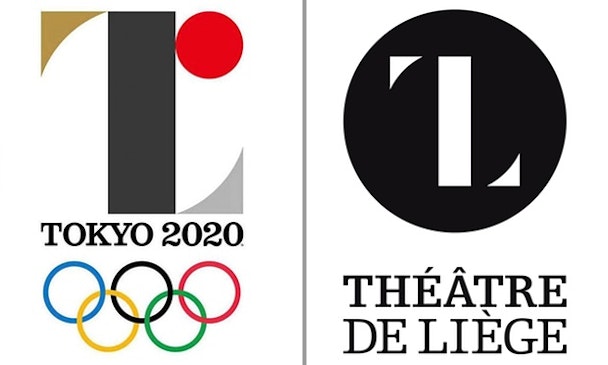Tokyo 2020 Olympics logo debacle: How hard is it to design anything original?
Given the thousands of logos and images we are subjected to every day, you could be forgiven for thinking that the Tokyo Olympics’ decision to scrap its logo amid accusations of plagiarism marks a complex design conundrum (if not a full scale crisis).

In case the story passed you by, the Tokyo 2020 Olympic organising committee yesterday decided to scrap the logo of designer Kenjiro Sano. The designs, which were only unveiled in late July, were challenged by Belgian designer Olivier Debie as being suspiciously like his 2013 logo for Theatre de Liege. He and the theatre filed a lawsuit to prevent the logo being used.
After initially appearing to stand by their man, the committee seems to have been forced to act by mounting evidence that Sano has previous form when it comes to ‘borrowing’ in this way. Whether or not his Olympics designs borrowed directly from Debie may never be known, but he does have a track record.
Of course there will be those who believe that with the sheer noise of design that assails us today, there’s nothing new under the sun and it’s little wonder that designers sometimes wear their subliminal and overt influences a little too heavily. In my view, conscientious copying is unforgivable.
While true originality may be harder to achieve in design, it is its elusiveness that makes the pursuit worthwhile. Any designer who thinks otherwise would be better off packing it in and looking for another career. Nobody with any sense of self-worth comes into work looking to pass off somebody else’s design as their own. In my experience, when a colleague is told that a piece of work bears too close a resemblance to something else, they take it with good grace and look for another solution. Ultimately most of us want to come up with something unique that one day will be part of the consumer and business landscape.
Even if we give Mr Sano the benefit of the doubt and say that he has arrived at a design similar to Debie’s inadvertently, that still doesn’t exonerate him or his agency. Part of the design process is to have a system in place that is rigorous enough to demonstrate to doubters how an idea has developed from the original concept and ideas. With a paper trail in place, you can more easily fend off critics and protect the reputation of your clients.
For Tokyo, this is hugely embarrassing. Anyone who is involved in the Games knows the scrutiny that attends every element of them, from the initial choice of host city, through to the cost, and the designs that are produced. London 2012 saw its ‘Lisa Simpson’ logo ridiculed, and the originality of designer Thomas Heatherwick’s Olympic cauldron was challenged, so it should have come as no surprise to Tokyo to find itself under the global microscope.
Tokyo should have been to be able to demonstrate a completely rigorous procedure and this apparent failure will lead to huge soul searching. Proper due diligence during the design process to ensure an idea is robust can be too expensive or time consuming for some clients, but with something like an Olympics logo, which will be subject to global scrutiny and is being produced years in advance of the Games, there is little excuse.
There is no more ominous word for a designer than ‘plagiarism’. It will bring most who work in the creative industries out in shivers. Having said that, the Tokyo farce doesn’t spell a crisis in originality. The new talent that flows through our industry continues to breathe new life into it, and it’s that, combined with experience and knowledge of what’s gone before that makes for original thought.
Every time that you think that it’s all been done, up pops an Orange, an Apple, or some other maverick who zigs while others are zagging to show how wrong you are.
Giles Calver is planning director at Sedley Place
